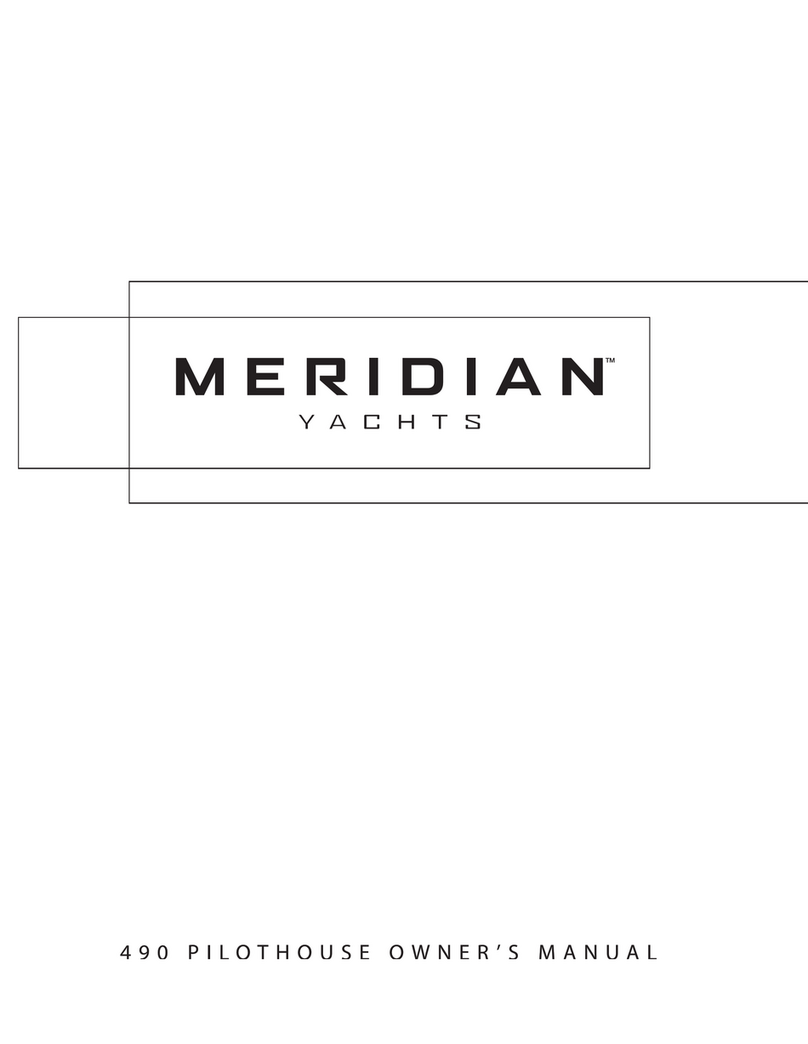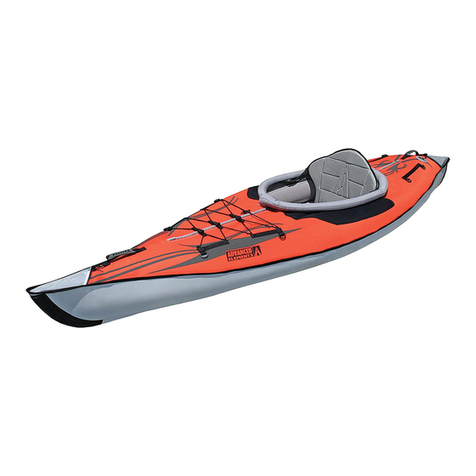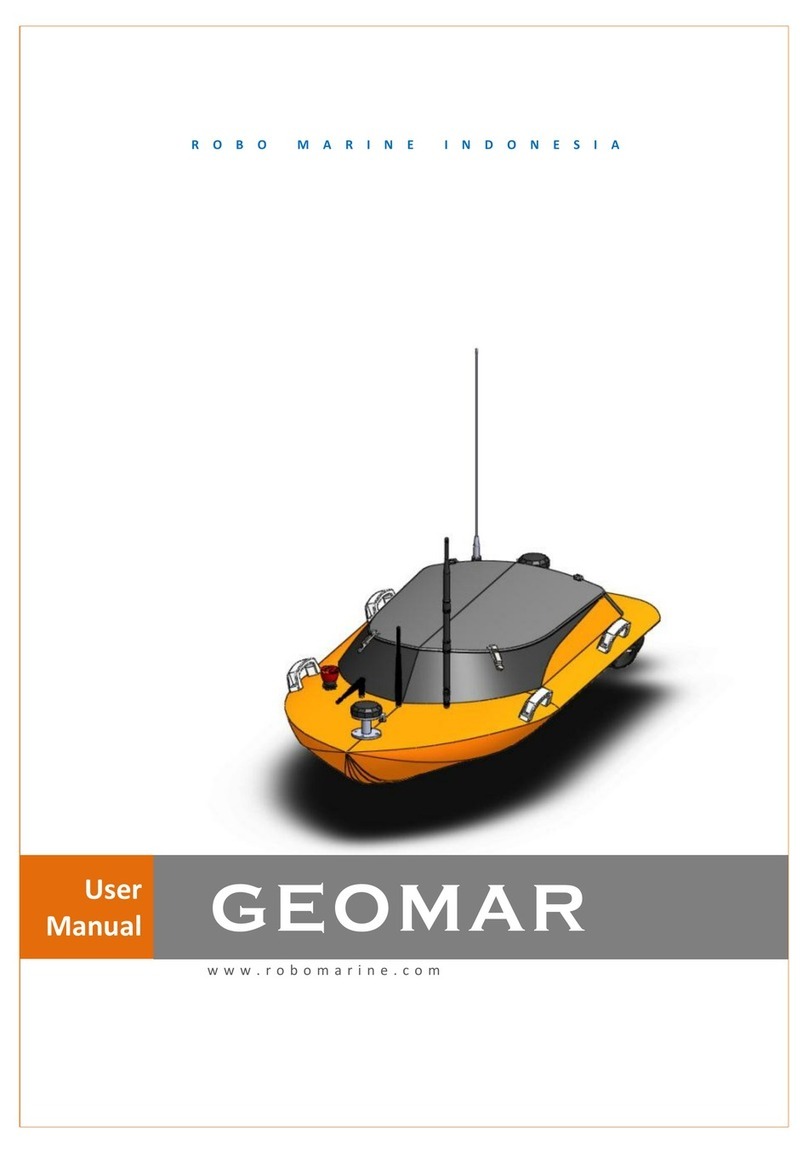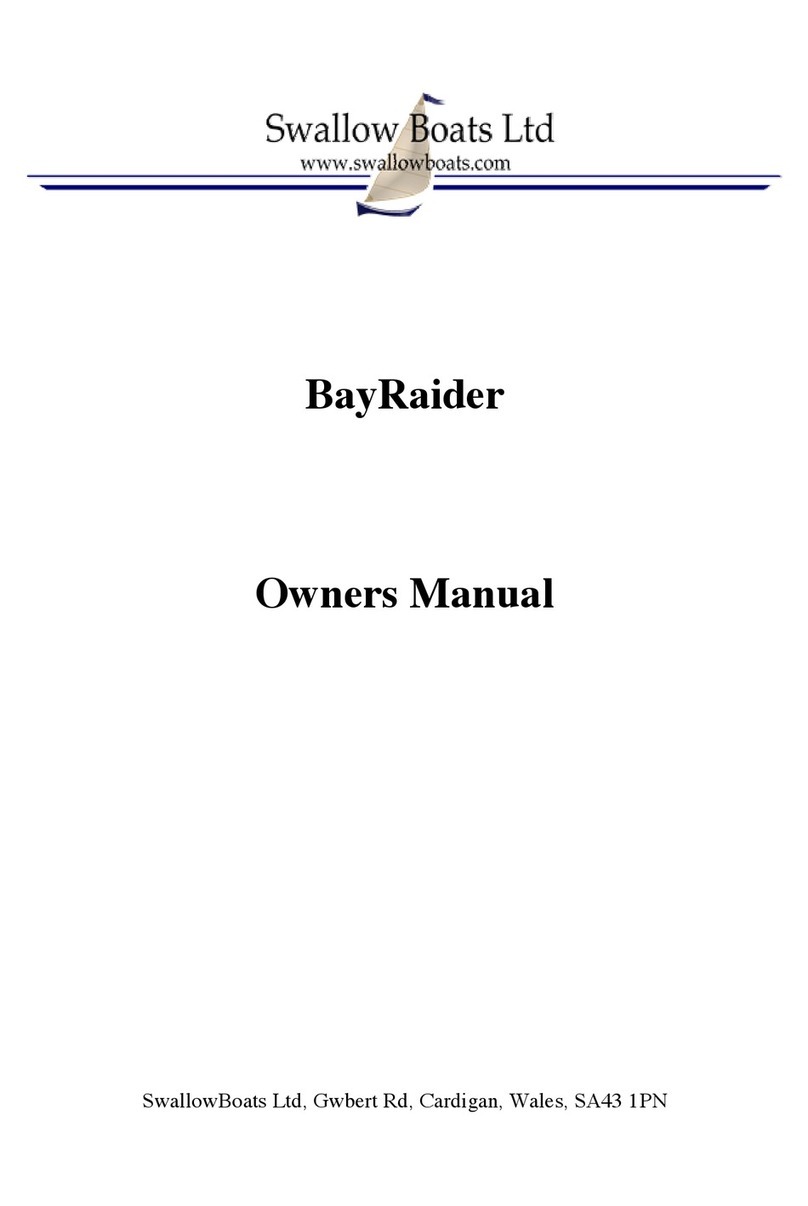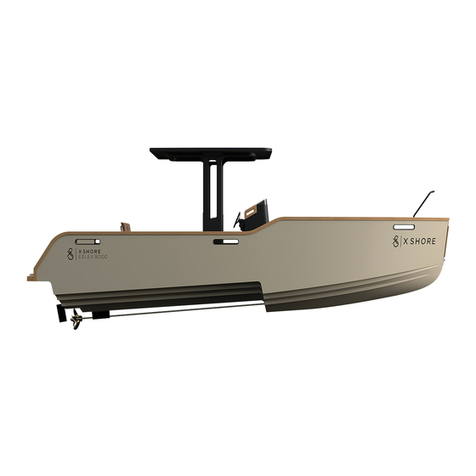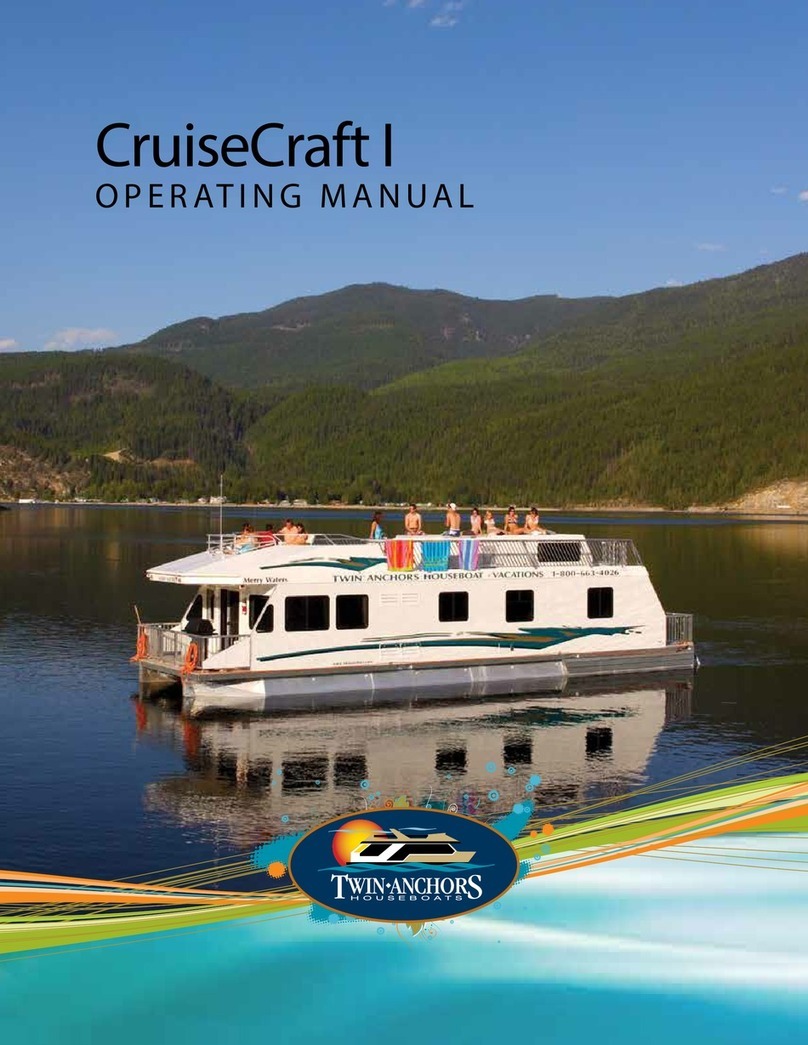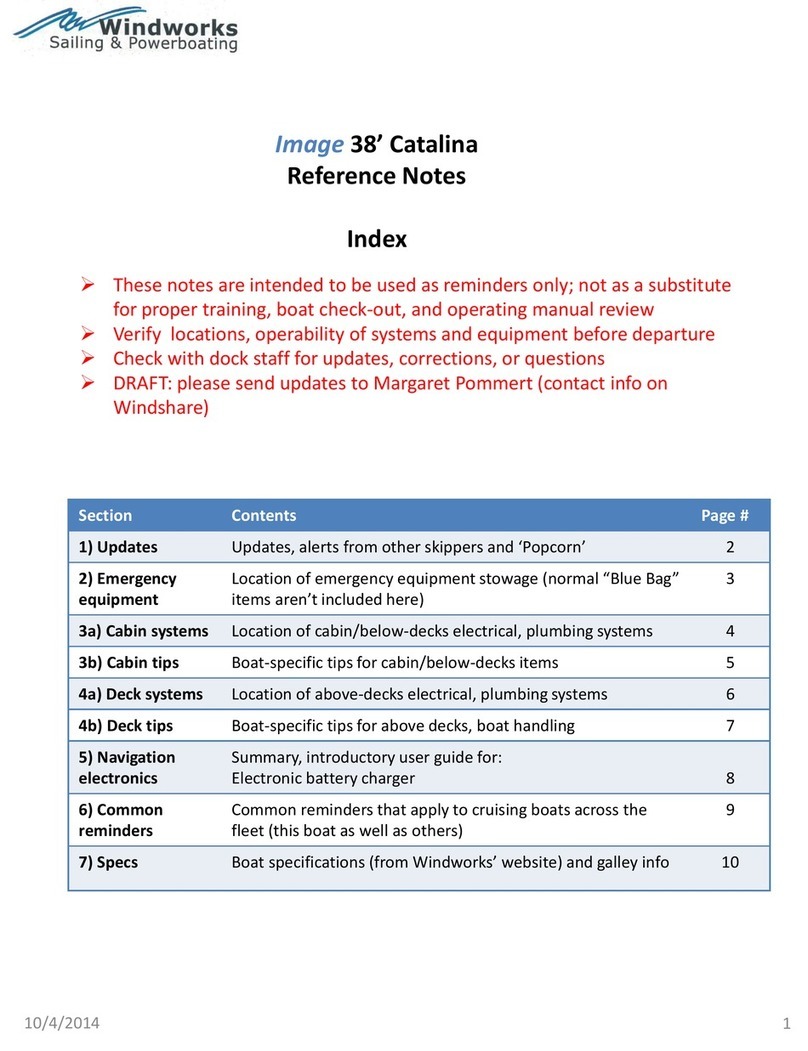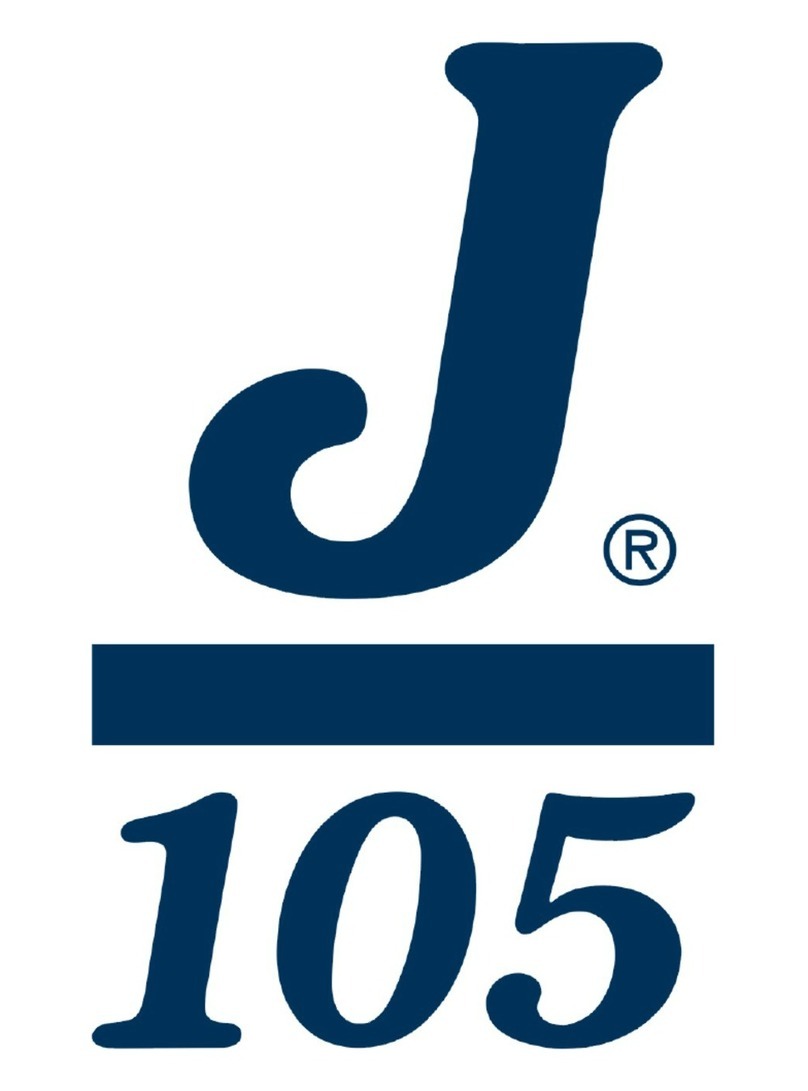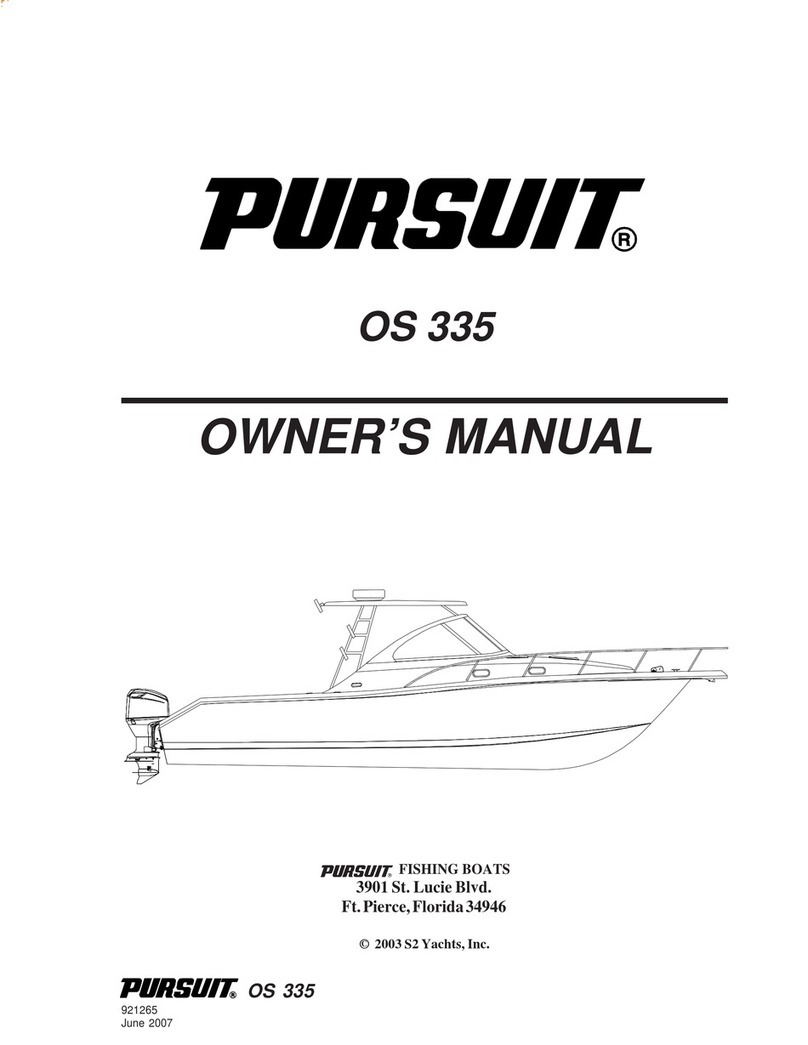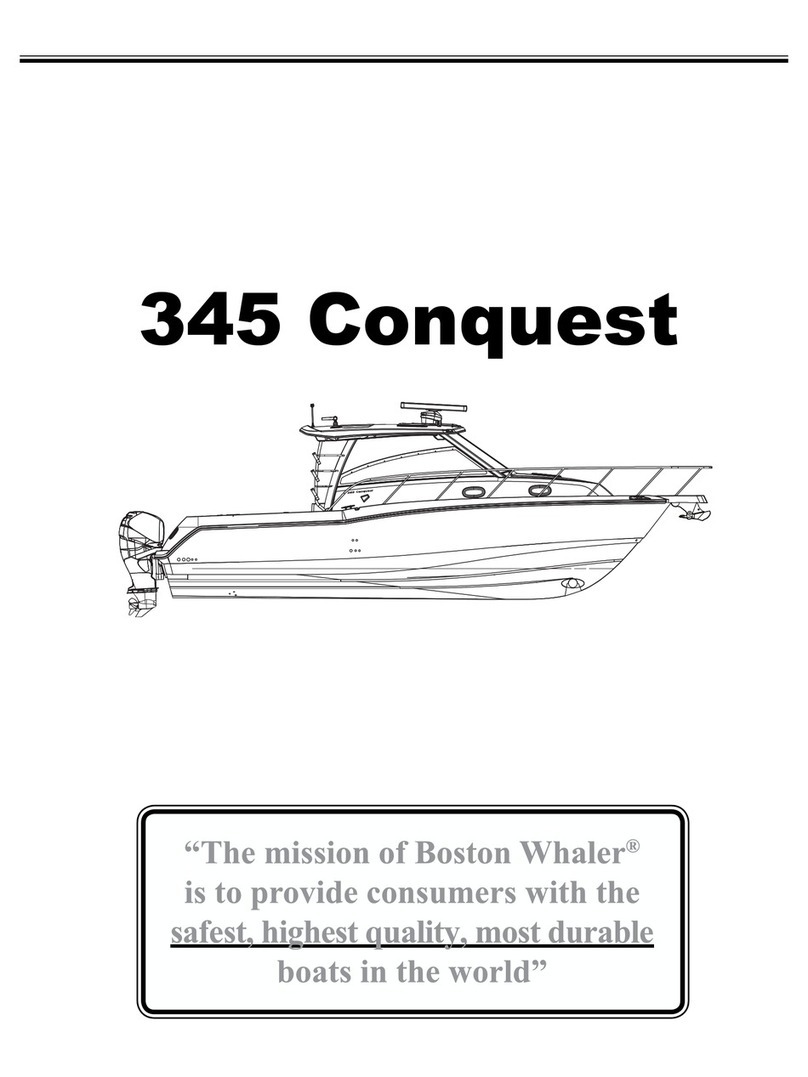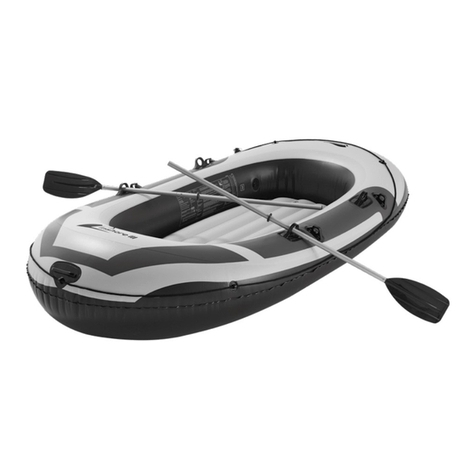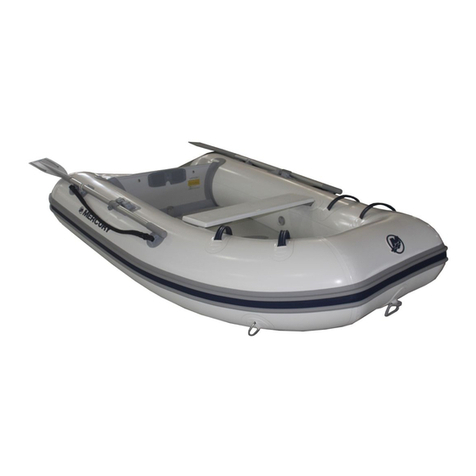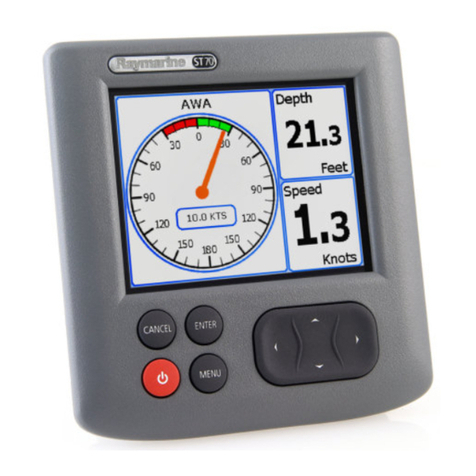
10
2.4 Front Console Lower Helm Station cont’d
BATTERY
Indicates alternator condition and battery voltage and /
or charging rate of the engine start battery.
The normal operating range is from 12 to 14 volts. If
the gauge reads below 12 volts during operation, or
displays a negative rate of charge, start your generator.
The battery gauge should read no less than 12 volts
when the boat is not running.
If you notice your batteries are running low, start your
boat, and and run it at 1,200 - 1,500 rpms for 15 to 20
minutes.
What if your boat doesn’t start?
If your boat does not start and you have no radio
communication with Twin Anchors base, go to the
nearest Twin Anchors boat so they can call Twin
Anchors Service for assistance. If a Twin Anchors boat is
not in sight, another company’s boat can call into their
marina and a message can be passed along. You may
also use a cell phone and call the Twin Anchors oce at
1-800-663-4026.
OPTION: Run the gen-set to charge the engine start
battery. If the engine still doesn’t start, call the our oce.
IGNITION
Prior to starting engine be sure no one is
in the water.
The key has three (3) positions:
START: Position is spring loaded and must be held
in this position until the engine starts. Never turn the
key to start position if the engine is already running.
RUN: After the engine starts, release the key, it will
automatically return to the ‘run’ position.
OFF: When you turn o your houseboat you should
remove the key. The key should be hung on the
hook located to your left between the helm station
and the sliding glass door.
RUNNING LIGHTS
Your houseboat needs to be BEACHED 1 HOUR
BEFORE DARK.
Running lights are only to be used in extreme
emergencies. Contact Twin Anchors Base for assistance.
BLOWER
Your blower should be turned on for 3-5 minutes before
starting your engine.
Turn your blower OFF when you start the engine.
Never turn your blower on before refueling
Always run your blower for 5-10 minutes after refueling.

